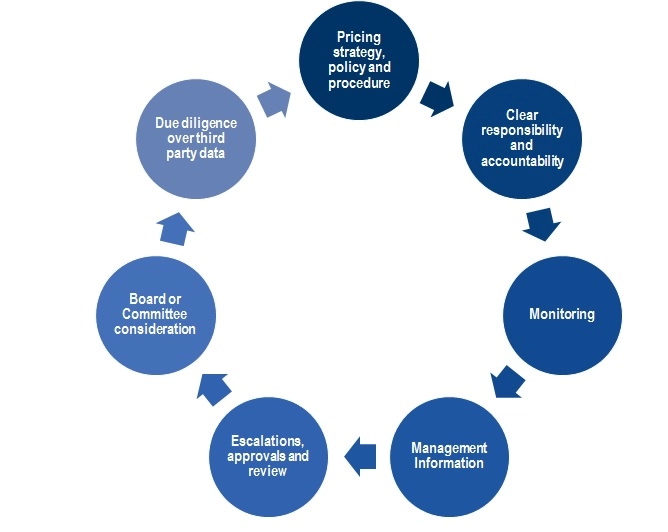
General Insurance Pricing Practices
28 January 2020
Background
The main issue is ‘price-walking’. This is unfair price differentiation where insurers impose a “loyalty penalty” on existing customers by increasing renewal prices each year. As a result, customers who fail to switch end up paying higher prices than newer customers with similar risk and ‘cost to serve’ characteristics. The cost to serve is the actual cost incurred in providing the service to a customer (e.g. acquisition and claims handling overheads). This form of price differentiation tends to impact vulnerable groups such as elderly and low-income consumers who are less likely to shop around.
Pressure from Citizens Advice and the Competitions and Markets Authority prompted the regulator to increase its focus on pricing practices within the general insurance market. In response, the FCA developed its stance through its discussion of fair pricing and feedback (FS19/04), review of pricing practices in household insurance (TR18/4) and accompanying Dear CEO Letter. Most recently its pricing practices market study interim report (MS18/1.2) sets out a number of potential remedies.
The potential remedies include: restrictions on pricing practices, restricting or banning the use of auto-renewal thereby making it opt-in only and easier to decline, strengthening the product governance rules and improving communication with customers.
What are the existing expectations for firms?
The FCA has already made some attempts to tackle this issue. For instance, the renewal disclosure rules mean that renewal quotes must now contain the price customers paid the previous year as well as the renewal price.
The existing requirements and expectations for firms are set out across the FCA Handbook, primarily from:
- Principles for Businesses (PRIN) – paying due regard to the interest of customers and ensuring they are treated fairly when they purchase or renew their general insurance products
- Insurance Distribution Directive – the customers’ best interests rule and product governance (PROD) requirements for manufacturers to consider the pricing structure of their products
- Senior Managers & Certification Regime – for the clear delegation of responsibility to individuals involved in pricing decisions, making senior managers accountable for conduct-related issues
There is also a clear link to the FCA’s work on value in the General Insurance (GI) distribution chain and its GI value measures. Manufacturers are expected to consider the value their products present for the target market and the impact of the distribution chain on the overall value – this should include the price charged.
What you need to do?
- Familiarise yourself with the FCA’s publications and apply the expectations set out in its Dear CEO Letter. These also apply outside of motor and home insurance
- Ensure you understand the end price paid by customer, what it covers and how it is split between different parties in the distribution chain
- Identify and take action if any groups of customers pay significantly higher prices than others with similar risk and cost to serve characteristics
- You must have a documented Pricing Governance and Control Framework in place. This should cover:
The FCA plans to publish its final market study report, alongside a consultation paper on any proposed remedies, in Q1 2020.
Get in touch
Our Regulatory Compliance team can address any questions or queries you may have, so please feel free to get in touch.
Want to know more?




